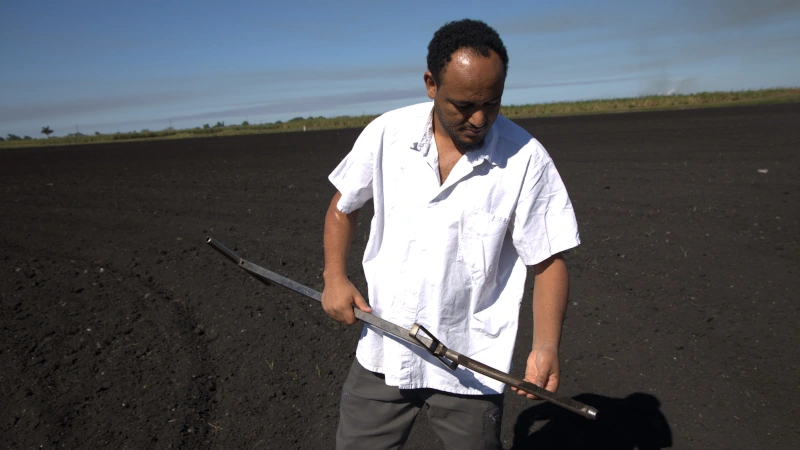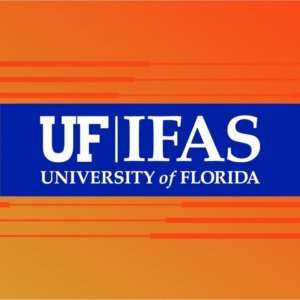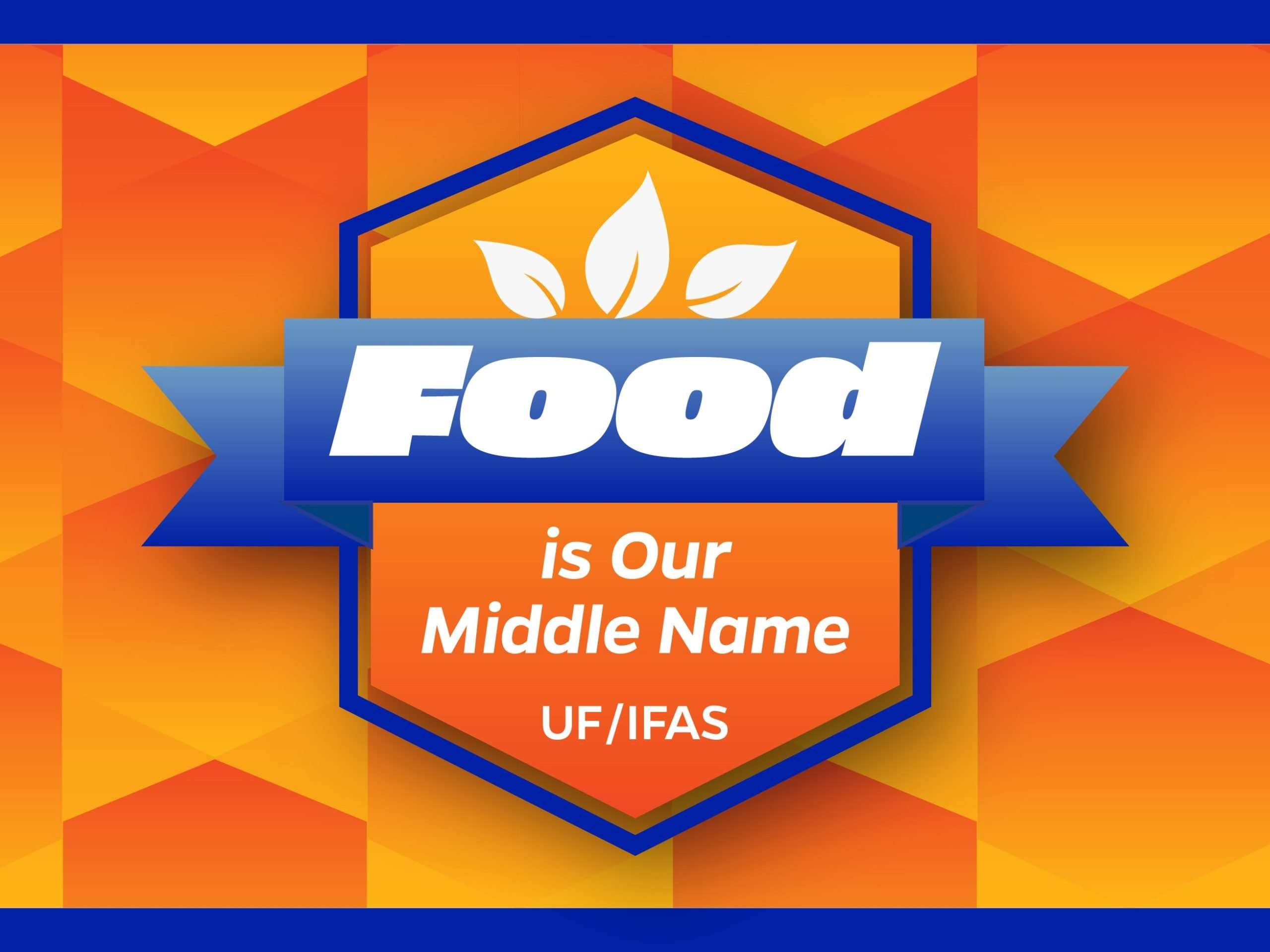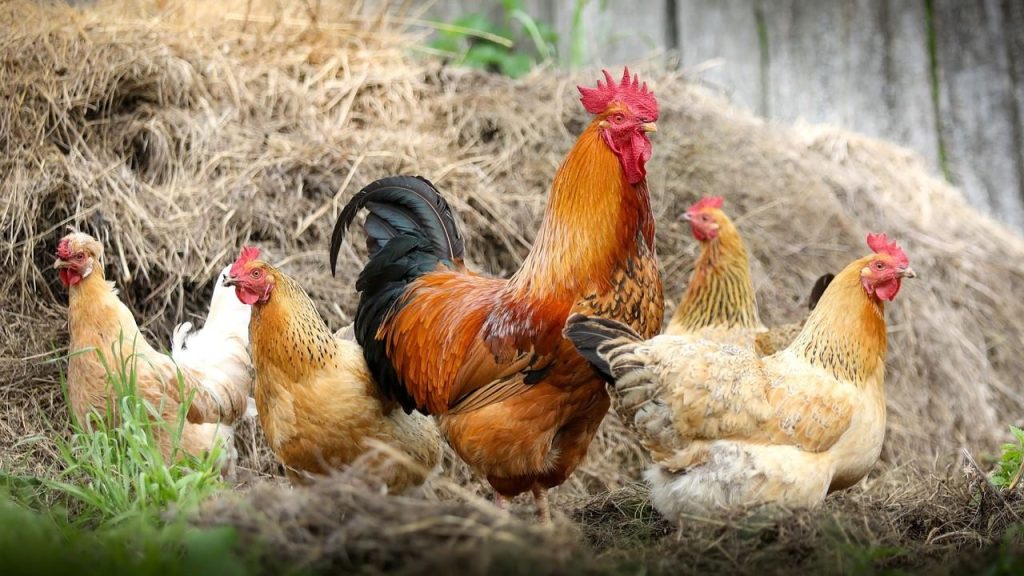UF/IFAS agronomist’s passion for farming drives his work to maximize soil health and crop growth for farmers
Niguss Solomon Hailegnaw developed a deep appreciation for the challenges and opportunities in farming while growing up in Ethiopia, where agriculture is a fundamental part more than 80% of Ethiopian daily life.
His passion for agronomy took root during his studies abroad, where he witnessed how soil degradation and low fertility hinder crop production around the world.
“It was during my master’s studies in Prague when I realized how critical soil health and nutrient management are to food security. That experience shaped my passion for agronomy and sustainable crop production,” said Hailegnaw.
Feature Image:UF/IFAS EREC assistant professor and Everglades Soil Testing Lab director, Niguss Hailegnaw, examines muck soil in the Everglades Agricultural Area. Credit: Avery Harrison, UF/IFAS EREC.
Today, as an assistant professor of crop nutrient management at the UF/IFAS Everglades Research and Education Center (EREC), Hailegnaw brings that passion to the heart of one of Florida’s critically important agricultural landscapes — the Everglades Agricultural Area (EAA). In this area — known for its fertile soils that produce sugarcane, sweet corn, rice, lettuce, microgreens, celery, green beans and radishes — he helps those Florida growers produce more productive crops while protecting natural resources and the environment.
“Dr. Niguss Hailegnaw has big shoes to fill, and he has already made a great start in the few months he has been at the center,” said Samira Daroub, EREC’s director. “He is laying an excellent foundation for impactful research and extension programs in South Florida, focusing on nutrient management for key row crops. His research is vital to the agricultural industry and local growers in Florida, promoting optimal and sustainable crop production practices.”
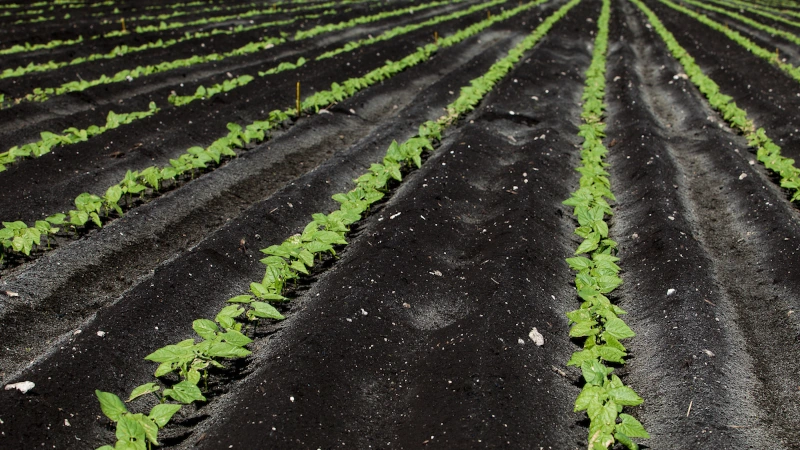
Rows of crops planted in black soil in the Everglade Agricultural Area’s Belle Glade city. Credit: Tyler Jones, UF/IFAS.
Florida farmers struggle with getting the most out of their fertilizers, said Hailegnaw.
“Florida growers in general face significant challenges related to low nutrient use efficiency, which are further compounded by rising fertilizer costs and the gradual deterioration of soil conditions,” he said. “These issues not only reduce the effectiveness of applied nutrients but also threaten the long-term sustainability and profitability of crop production.”
To address this, Hailegnaw’s research focuses on updating fertilizer rate recommendations to reflect modern cropping systems and the evolving properties of Florida’s soils. His goal is to develop science-backed guidelines that help growers apply just the right amount of nutrients — improving crop productivity while minimizing environmental impacts.
His work is about maintaining balance by updating and implementing the five Rs of nutrient stewardship: right source, right rate, right time, right placement and the right amount of water to optimize fertilizer use.
He also envisions using artificial intelligence. He’s working on innovative projects using advanced technologies to make nutrient management more precise and efficient. One project he has in mind involves leveraging multispectral imaging to assess the nutritional status of sweet corn. By using drones equipped with multispectral cameras, his lab team can capture high-resolution images of large fields, identifying nutrient deficiencies early.
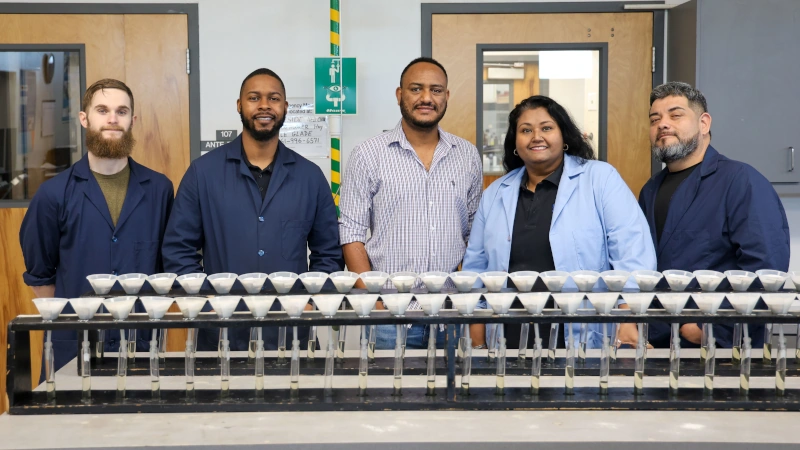
Members of Everglades Soil Testing Lab stand behind front a filtration of soil extract for analysis. (L-R) Lab assistant Samuel Liss, lab technician Cartavious Baldwin, lab director and assistant professor Niguss Hailegnaw, lab manager and chemist Rani Ramlakhan and Antonio Ayala, lab assistant. Credit: Avery Harrison, UF/IFAS EREC.
In the long run, this project could allow growers to make timely identification of fertilizer deficiency and act accordingly, ultimately enhancing yield while reducing costs.
“This technology has the potential to transform how we manage large-scale agricultural systems by providing real-time insights and promoting sustainable farming practices,” he said.
Another major focus of his work is improving the use of phosphorus in the EAA, where soil subsidence and oxidation have raised pH levels and decreased phosphorus availability. He and his team are exploring a combination of additives such as biochar and plant growth-promoting bacteria to increase phosphorus solubility and make it more accessible to crops. This research aims to reduce fertilizer-associated costs and promote sustainable crop production.
In addition to his research, he plays a key role in Extension activities, directly supporting Florida’s growers. As director of the Everglades Soil Test Laboratory, he updates the fertilizer recommendation rates used by Everglades Soil Testing Lab and oversees the timely delivery of accurate soil analyses. These analyses are crucial for helping farmers make informed decisions about fertilizer applications.
“For example, if a grower knows precisely how much phosphorus their soil contains, they can avoid over or under-application, which could potentially harm the crop due to toxicity or deficiency,” he said. Hailegnaw. “This will eventually reduce environmental risks and save fertilizer-associated costs.”
To showcase this dedication to the agricultural community, growers and reporters are invited to join Hailegnaw and the EREC faculty and students for an interactive field day themed “Growing Together Toward Sustainability.” Registration is required for the day’s events at 3200 East Canal St. South in Belle Glade that will include facility tours and highlights of current research project throughout the grounds.
The post UF/IFAS agronomist’s passion for farming drives his work to maximize soil health and crop growth for farmers first appeared in the University of Florida Institute of Food and Agricultural Sciences News Blog.
Written by: Lourdes Mederos, Public Relations Manager, UF/IFAS
Lourdes’ passion is to bring awareness of innovative work, research breakthroughs, and science-based solutions to all of Florida by connecting the work of dedicated UF/IFAS scientists, faculty, students, and Extension agents in Florida’s southeast region with the residents and visitors of the Sunshine State through the power of public relations.
The mission of the University of Florida Institute of Food and Agricultural Sciences (UF/IFAS) is to develop knowledge relevant to agricultural, human and natural resources and to make that knowledge available to sustain and enhance the quality of human life. With more than a dozen research facilities, 67 county Extension offices, and award-winning students and faculty in the UF College of Agricultural and Life Sciences, UF/IFAS brings science-based solutions to the state’s agricultural and natural resources industries, and all Florida residents.
Feeding a hungry world takes effort. Nearly everything we do comes back to food: from growing it and getting it to consumers, to conserving natural resources and supporting agricultural efforts. Explore all the reasons why at ifas.ufl.edu/food or follow #FoodIsOurMiddleName.
